Search Result
Results for "
diet-induced
" in MedChemExpress (MCE) Product Catalog:
3
Isotope-Labeled Compounds
| Cat. No. |
Product Name |
Target |
Research Areas |
Chemical Structure |
-
- HY-N0723
-
|
|
Others
|
Metabolic Disease
|
|
Neomangiferin is a natural C-glucosyl xanthone isolated from m the dried rhizome of Anemarrhena asphodeloides. Neomangiferin has significant therapeutic effects on high-fat diet-induced nonalcoholic fatty liver disease (NAFLD) in rats .
|
-

-
- HY-124758
-
|
|
Mitochondrial Metabolism
|
Metabolic Disease
Cancer
|
|
SH-BC-893 is an orally active anti-neoplastic sphingolipid analog. SH-BC-893 also protects from ceramide-induced mitochondrial dysfunction and corrects diet-induced obesity. SH-BC-893 can be used for the research of cancer and obesity .
|
-

-
- HY-P4860
-
|
|
Akt
|
Metabolic Disease
|
|
Adropin (34-76) (human, mouse, rat) regulates fuel selection preferences in skeletal muscle. Adropin increases insulin-induced Akt phosphorylation and cell-surface expression of GLUT4, in diet-induced obesity (DIO) mouse.
|
-

-
- HY-P10032
-
-
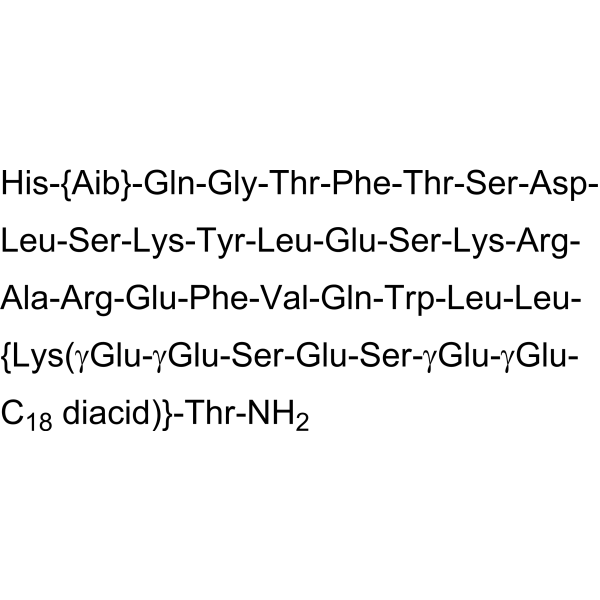
-
- HY-139994
-
-
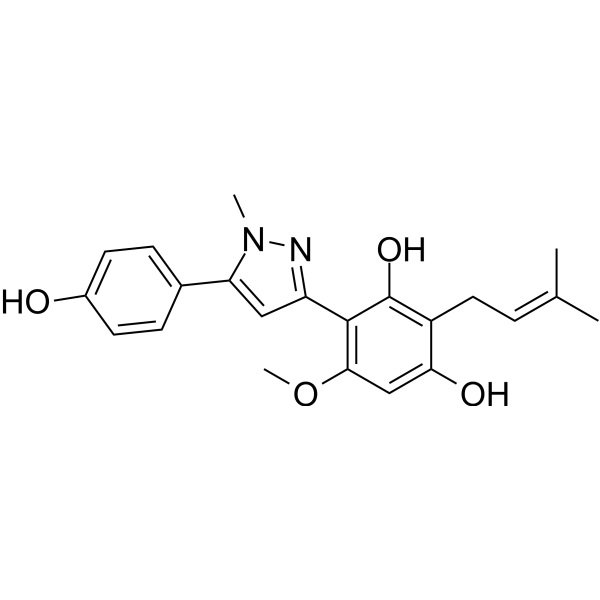
-
- HY-101699A
-
|
|
MCHR1 (GPR24)
|
Metabolic Disease
|
|
AMG-076 is an orally bioavailable and selective MCHR1 antagonist. AMG-076 results in significant reduction in body weight gain in nonobese mice fed a high-fat diet and in high-fat diet-induced obese (DIO) mice .
|
-

-
- HY-107734
-
|
|
Neuropeptide Y Receptor
|
Metabolic Disease
Endocrinology
|
|
L 152804 is an orally active and selective neuropeptide Y Y5 receptor (NPY5-R) antagonist, with a Ki of 26 nM for hY5. L 152804 causes weight loss in diet-induced obese mice by modulating food intake and energy expenditure .
|
-

-
- HY-N0513
-
|
|
Others
|
Cardiovascular Disease
Inflammation/Immunology
|
|
Loganic acid is an iridoid isolated from cornelian cherry fruits. Loganic acid can modulate diet-induced atherosclerosis and redox status. Loganic acid has strong free radical scavenging activity and remarkable cyto-protective effect against heavy metal mediated toxicity .
|
-
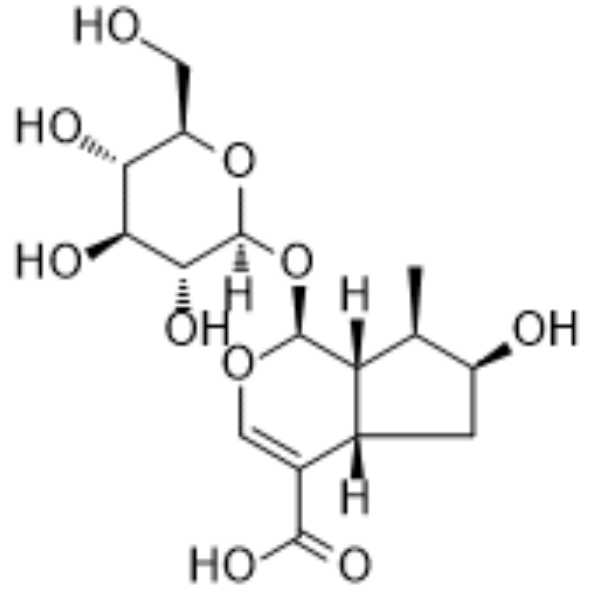
-
- HY-135505
-
|
|
Acyltransferase
|
Metabolic Disease
|
|
JTP-103237 is a MGAT2 inhibitor (IC50: 0.019 μM and 6.423 μM for hMGAT2 and hMGAT3 respectively). JTP-103237 modulates fat absorption, decreases plasma glucose levels and prevents diet-induced obesity .
|
-
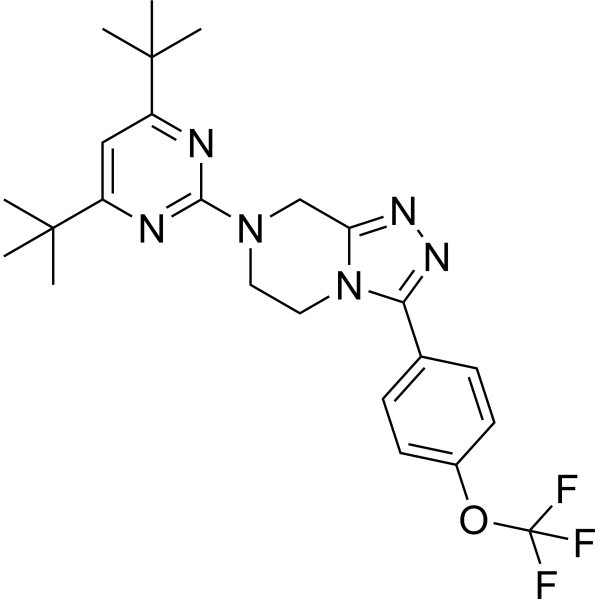
-
- HY-P10032A
-
-
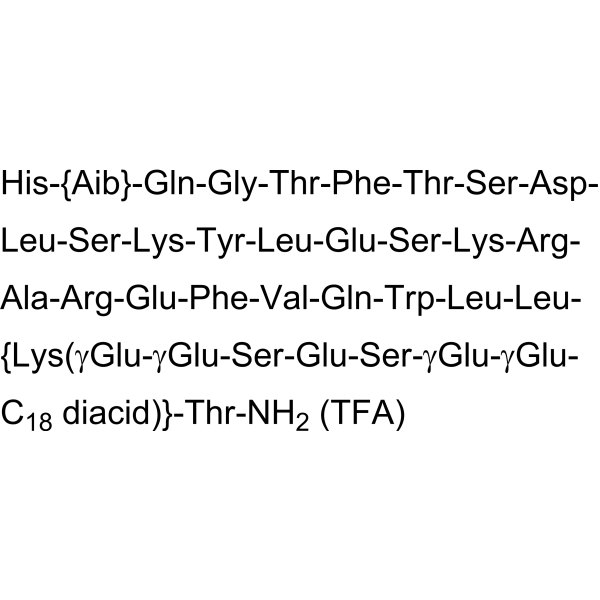
-
- HY-101064
-
|
N-FMOC-leucine; NPC 15199; NSC 334290
|
|
|
|
Fmoc-leucine is a selective PPARγ modulator. Fmoc-leucine activates PPARγ with a lower potency but a similar maximal efficacy than rosiglitazone. Fmoc-leucine improves insulin sensitivity in normal, diet-induced glucose-intolerant, and in diabetic db/db mice. Fmoc-leucine has a lower adipogenic activity .
|
-
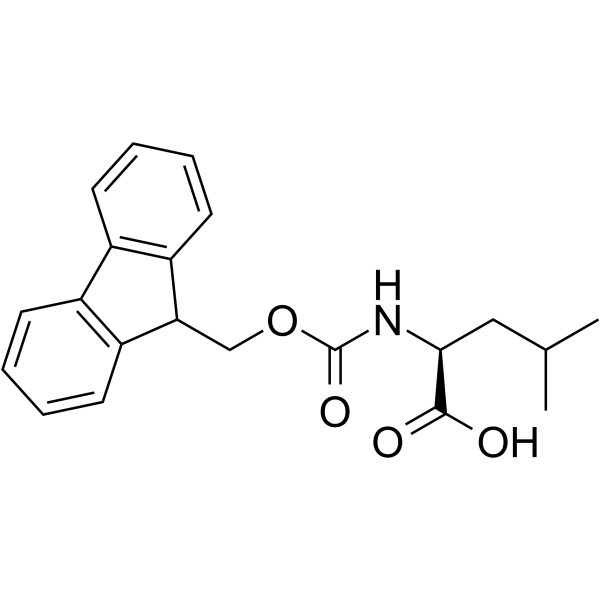
-
- HY-130208
-
|
TDG
|
Galectin
|
Metabolic Disease
Inflammation/Immunology
Cancer
|
|
Thiodigalactoside (TDG) is an orally active and potent galectin (GAL) inhibitor with Kd values of 24 μM, 49 μM for GAL1 and GAL3, respectively . Thiodigalactoside, a non-metabolizable disaccharide, has anti-inflammatory and anti-cancer activity. Thiodigalactoside dramatically reduces body weight gain in diet-induced obese rats .
|
-
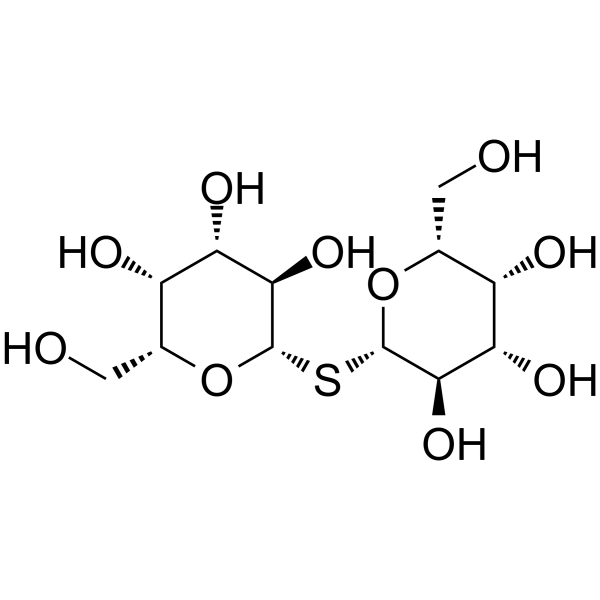
-
- HY-103327
-
|
|
Cannabinoid Receptor
|
Metabolic Disease
|
|
MJ15 is a potent and selective CB1 receptor antagonist with a Ki of 27.2 pM and an IC50 of 118.9 pM for rat CB1 receptors. MJ15 exhibits potency in obesity and hyperlipidemia models. MJ15 inhibits food intake and increases in body weight in diet-induced obese rats and mice .
|
-

-
- HY-123033A
-
|
|
Sirtuin
Endogenous Metabolite
|
Neurological Disease
Metabolic Disease
Cancer
|
|
Nicotinamide riboside Chloride, an orally active NAD + precursor, increases NAD + levels and activates SIRT1 and SIRT3. Nicotinamide riboside Chloride is a source of vitamin B3 (niacin) and enhances oxidative metabolism, protection against high fat diet-induced metabolic abnormalities . Nicotinamide riboside Chloride reduces cognitive deterioration in a transgenic mouse model of Alzheimer’s disease .
|
-
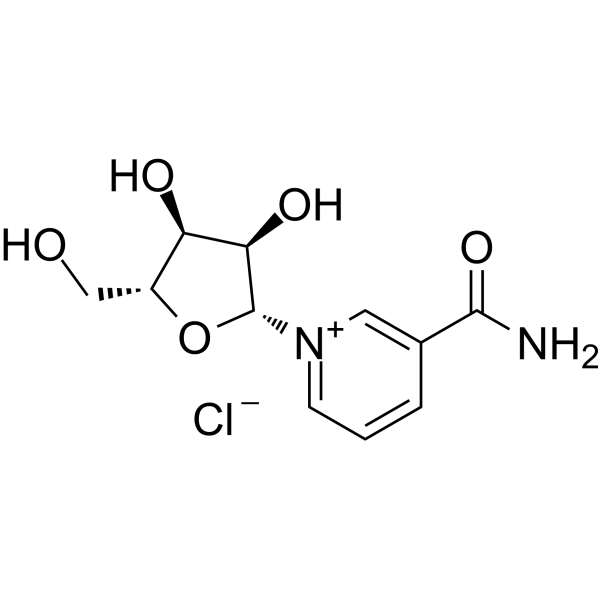
-
- HY-128872
-
|
EHP-101; VCE-004.8
|
PPAR
Cannabinoid Receptor
HIF/HIF Prolyl-Hydroxylase
|
Metabolic Disease
Inflammation/Immunology
|
|
Etrinabdione (EHP-101; VCE-004.8) is an orally active, specific PPARγ and CB2 receptor dual agonist. Etrinabdione inhibits prolyl-hydroxylases (PHDs) and activates the HIF pathway. Etrinabdione, a semi-synthetic multitarget cannabinoquinoid, has potent anti-inflammatory activity. Etrinabdione attenuates adipogenesis and prevents diet-induced obesity .
|
-
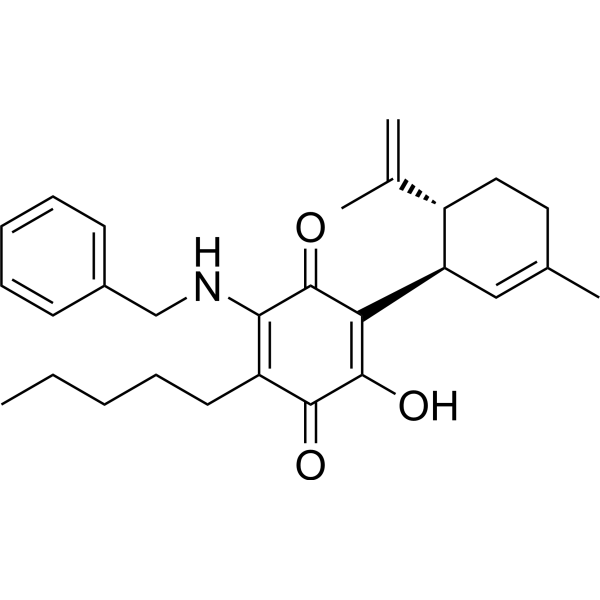
-
- HY-123033
-
|
|
Sirtuin
Endogenous Metabolite
|
Neurological Disease
Metabolic Disease
Cancer
|
|
Nicotinamide riboside, an orally active NAD + precursor, increases NAD + levels and activates SIRT1 and SIRT3. Nicotinamide riboside is a source of vitamin B3 (niacin) and enhances oxidative metabolism, protection against high fat diet-induced metabolic abnormalities . Nicotinamide riboside reduces cognitive deterioration in a transgenic mouse model of Alzheimer’s disease .
|
-
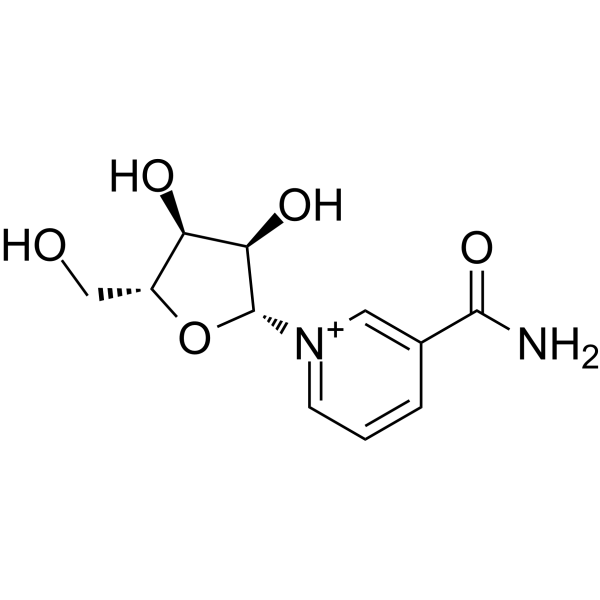
-
- HY-147927
-
|
|
Enteropeptidase
|
Metabolic Disease
|
|
Human enteropeptidase-IN-1 (compound 6b) is a highly potent, orally active and low systemic exposure enteropeptidase inhibitor. Human enteropeptidase-IN-1 boosts the increase in fecal protein output, and exhibits potent body weight loss in diet-induced obese (DIO) rat model. Human enteropeptidase-IN-1 can be used for anti-obesity research .
|
-
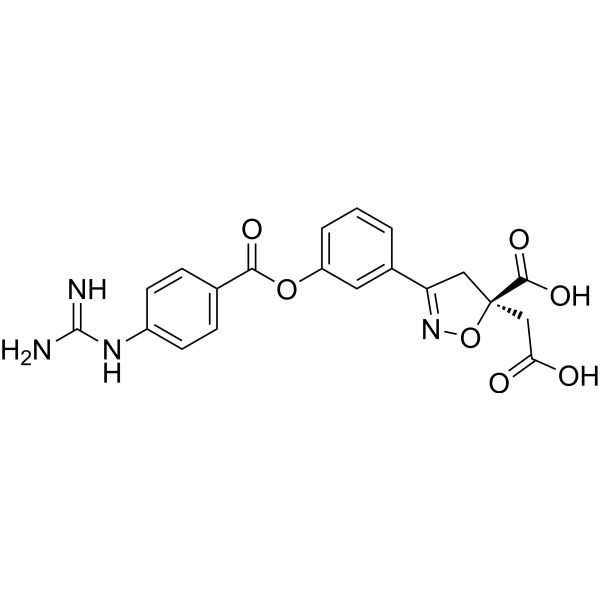
-
- HY-123033B
-
|
|
Sirtuin
Endogenous Metabolite
|
Neurological Disease
Metabolic Disease
Cancer
|
|
Nicotinamide riboside tartrate, an orally active NAD + precursor, increases NAD + levels and activates SIRT1 and SIRT3. Nicotinamide riboside tartrate is a source of vitamin B3 (niacin) and enhances oxidative metabolism, protection against high fat diet-induced metabolic abnormalities . Nicotinamide riboside tartrate reduces cognitive deterioration in a transgenic mouse model of Alzheimer’s disease .
|
-
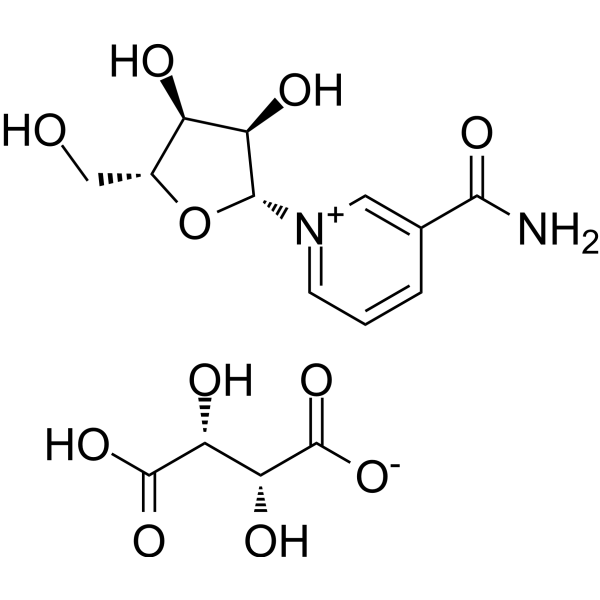
-
- HY-123033C
-
|
|
Sirtuin
Endogenous Metabolite
|
Neurological Disease
Metabolic Disease
Cancer
|
|
Nicotinamide riboside malate, an orally active NAD + precursor, increases NAD + levels and activates SIRT1 and SIRT3. Nicotinamide riboside malate is a source of vitamin B3 (niacin) and enhances oxidative metabolism, protection against high fat diet-induced metabolic abnormalities . Nicotinamide riboside malate reduces cognitive deterioration in a transgenic mouse model of Alzheimer’s disease .
|
-

-
- HY-101064S2
-
|
N-FMOC-leucine-d3; NPC 15199-d3; NSC 334290-d3
|
PPAR
|
|
|
Fmoc-leucine-d3 is the deuterium labeled Fmoc-leucine. Fmoc-leucine is a selective PPARγ modulator. Fmoc-leucine activates PPARγ with a lower potency but a similar maximal efficacy than rosiglitazone. Fmoc-leucine improves insulin sensitivity in normal, diet-induced glucose-intolerant, and in diabetic db/db mice. Fmoc-leucine has a lower adipogenic activity[1].
|
-

-
- HY-101064S3
-
|
|
PPAR
|
|
|
Fmoc-leucine-d10 is the deuterium labeled Fmoc-leucine. Fmoc-leucine is a selective PPARγ modulator. Fmoc-leucine activates PPARγ with a lower potency but a similar maximal efficacy than rosiglitazone. Fmoc-leucine improves insulin sensitivity in normal, diet-induced glucose-intolerant, and in diabetic db/db mice. Fmoc-leucine has a lower adipogenic activity[1].
|
-

-
- HY-14342
-
MK-5046
1 Publications Verification
|
Bombesin Receptor
|
Metabolic Disease
|
|
MK-5046 is a potent, selective and orally active Bombesin receptor subtype-3 (BRS-3) allosteric agonist with an IC50 and an EC50 value of 27 and 25 nM for hBRS-3, respectively. MK-5046 inhibits food intake and reduces body weight of diet-induced obese (DIO) mouse models. MK-5046 can be used for the research of obesity .
|
-
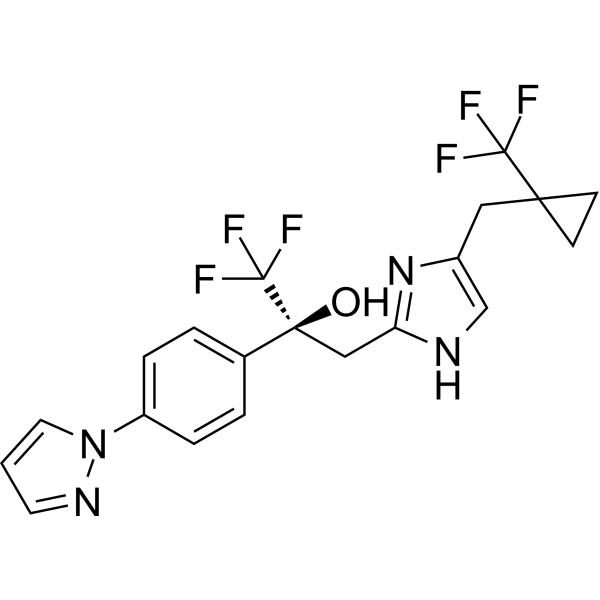
-
- HY-161305
-
|
|
HDAC
|
Metabolic Disease
Cancer
|
|
SE-7552, a 2-(difluoromethyl)-1,3,4-oxadiazole (DFMO) derivative, is an orally active, highly selective, non-hydroxamate HDAC6 inhibitor with an IC50 of 33 nM. SE-7552 is greater than 850-fold selectivity versus all other known HDAC isozymes. SE-7552 is capable of blocking multiple myeloma growth in vivo. SE-7552 acts as an anti-obesity agent in diet-induced obese mice .
|
-
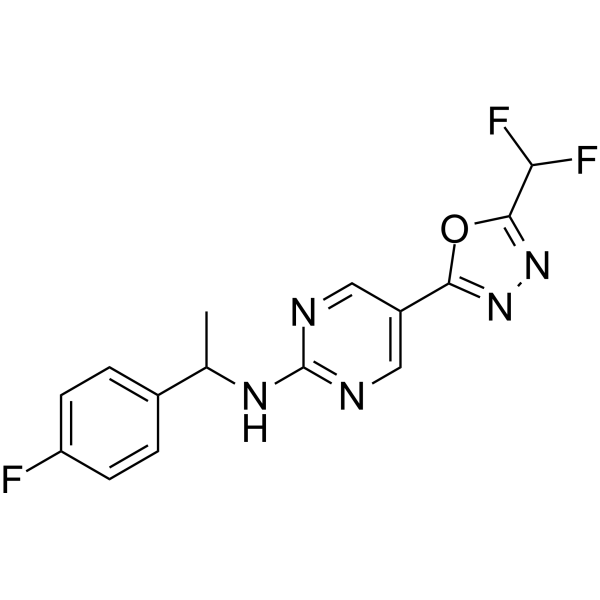
-
- HY-14393
-
Emodin
Maximum Cited Publications
17 Publications Verification
Frangula emodin
|
SARS-CoV
Casein Kinase
Autophagy
11β-HSD
|
Cancer
|
|
Emodin (Frangula emodin), an anthraquinone derivative, is an anti-SARS-CoV compound. Emodin blocks the SARS coronavirus spike protein and angiotensin-converting enzyme 2 (ACE2) interaction . Emodin inhibits casein kinase-2 (CK2). Anti-inflammatory and anticancer effects . Emodin is a potent selective 11β-HSD1 inhibitor with the IC50 of 186 and 86 nM for human and mouse 11β-HSD1, respectively. Emodin ameliorates metabolic disorder in diet-induced obese mice .
|
-

-
- HY-P1723A
-
|
Neuropeptide Q TFA
|
Neuropeptide Y Receptor
|
|
|
Spexin TFA is a potent galanin receptor 2/3 (GAL2/GAL3) agonist (EC50 values are 45.7 and 112.2 nM, respectively). Spexin TFA exhibits no significant activity at galanin receptor 1. Spexin TFA is an endogenous satiety-inducing peptide; Spexin TFA inhibits long chain fatty acid uptake by adipocytes and decreases food consumption in diet-induced obese mice and rats. Spexin TFA attenuates LH secretion in goldfish. Spexin TFA exhibits anxiolytic effects in vivo.
|
-

-
- HY-14342A
-
|
|
Others
|
Metabolic Disease
|
|
(R)-MK-5046 is the isomer of MK-5046 (HY-14342), and can be used as an experimental control. MK-5046 is a potent, selective and orally active Bombesin receptor subtype-3 (BRS-3) allosteric agonist with an IC50 and an EC50 value of 27 and 25 nM for hBRS-3, respectively. MK-5046 inhibits food intake and reduces body weight of diet-induced obese (DIO) mouse models. MK-5046 can be used for the research of obesity .
|
-
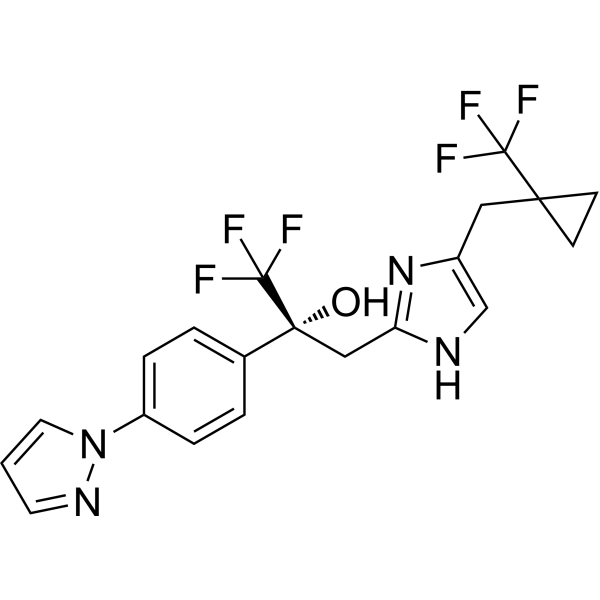
-
- HY-117427
-
|
|
Others
|
Metabolic Disease
|
|
D5D-IN-326 is a selective, orally active delta-5 desaturase (D5D) inhibitor, with IC50s of 72 and 22 nM for rat and human D5D in enzymic and cell-based assays, respectively, has no effect on D6D or D9D activity. D5D-IN-326 reduces insulin resistance and decreases body weight in diet-induced obese C57BL/6J mice .
|
-

-
- HY-14393S
-
|
Frangula emodin-d4
|
Isotope-Labeled Compounds
SARS-CoV
Casein Kinase
Autophagy
11β-HSD
|
Cancer
|
|
Emodin-d4 is the deuterium labeled Emodin. Emodin (Frangula emodin), an anthraquinone derivative, is an anti-SARS-CoV compound. Emodin blocks the SARS coronavirus spike protein and angiotensin-converting enzyme 2 (ACE2) interaction[1]. Emodin inhibits casein kinase-2 (CK2). Anti-inflammatory and anticancer effects[2]. Emodin is a potent selective 11β-HSD1 inhibitor with the IC50 of 186 and 86 nM for human and mouse 11β-HSD1, respectively. Emodin ameliorates metabolic disorder in diet-induced obese mice[3].
|
-

-
- HY-121744
-
PS10
2 Publications Verification
|
PDHK
|
Inflammation/Immunology
|
|
PS10 is a novel, potent and ATP-competitive pan-PDK inhibitor, inhibits all PDK isoforms with IC50 of 0.8 μM, 0.76 μM, 2.1 μM and 21.3 μM for PDK2, PDK4, PDK1, and PDK3, respectively. PS10 shows high affinity for PDK2 (Kd= 239 nM) than for Hsp90 (Kd= 47 μM) . PS10 improves glucose tolerance, stimulates myocardial carbohydrate oxidation in diet-induced obesity. PS10 has the potential for the investigation of diabetic cardiomyopathy .PDK: pyruvate dehydrogenase kinase
|
-
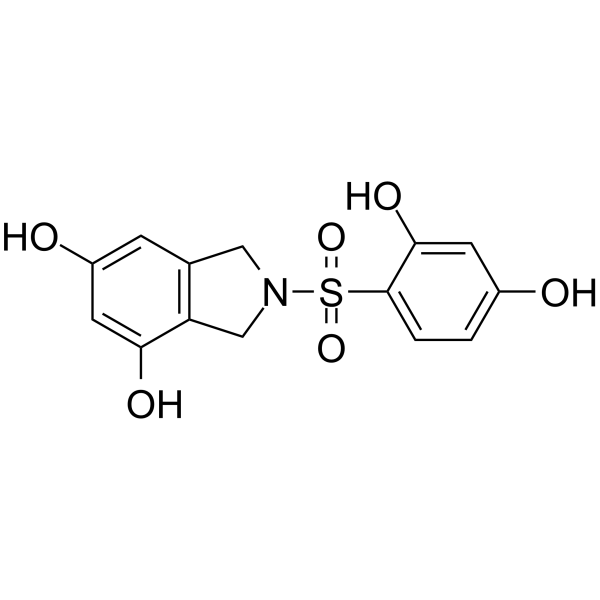
-
- HY-12443
-
|
|
Casein Kinase
|
Neurological Disease
|
|
PF-5006739 is a potent and selective inhibitor of CK1δ/ε with IC50s of 3.9 nM and 17.0 nM, respectively. PF-5006739 is a potential therapeutic agent for a range of psychiatric disorders with low nanomolar in vitro potency for CK1δ/ε and high kinome selectivity. PF-5006739 attenuats opioid agent-seeking behavior in a rodent operant reinstatement model in animals in a dose-dependent manner . PF-5006739 improves glucose tolerance in both diet-induced obesity (DIO) and genetic (ob/ob) mice models of obesity .
|
-

-
- HY-14393R
-
|
Frangula emodin (Standard)
|
SARS-CoV
Casein Kinase
Autophagy
11β-HSD
|
Cancer
|
|
Emodin (Standard) is the analytical standard of Emodin. This product is intended for research and analytical applications. Emodin (Frangula emodin), an anthraquinone derivative, is an anti-SARS-CoV compound. Emodin blocks the SARS coronavirus spike protein and angiotensin-converting enzyme 2 (ACE2) interaction . Emodin inhibits casein kinase-2 (CK2). Anti-inflammatory and anticancer effects . Emodin is a potent selective 11β-HSD1 inhibitor with the IC50 of 186 and 86 nM for human and mouse 11β-HSD1, respectively. Emodin ameliorates metabolic disorder in diet-induced obese mice .
|
-
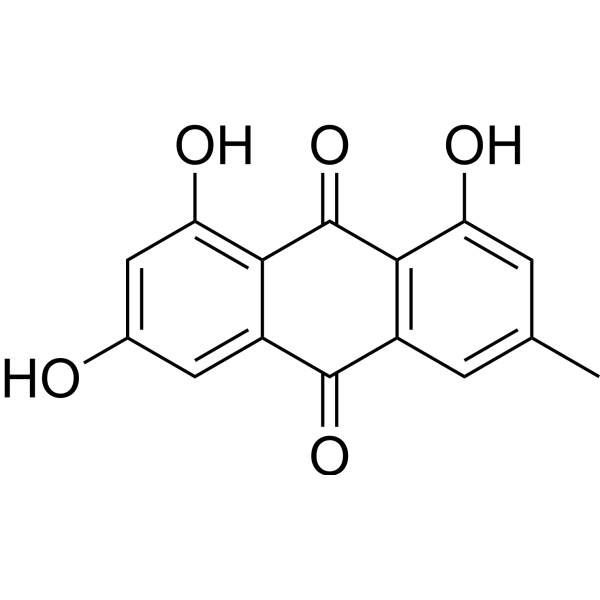
-
- HY-14229
-
|
CCDC
|
G protein-coupled Bile Acid Receptor 1
Calcium Channel
|
Metabolic Disease
|
|
TGR5 Receptor Agonist (CCDC), a potent Takeda G protein-coupled receptor 5 (TGR5; GPCR19) agonist, shows improved potency in the U2-OS cells and melanophore cells with pEC50s of 6.8 and 7.5, respectively. TGR5 Receptor Agonist can induce peripheral and central hypersensitivity to bladder distension in mice, and increase intracellular Ca 2+ concentration. TGR5 Receptor Agonist can also reduces food intake and improves insulin responsiveness, in diet-induced obese mice. TGR5 Receptor Agonist can be used to research diabetes, bladder hypersensitivity and anti-obesity .
|
-

-
- HY-34781
-
-
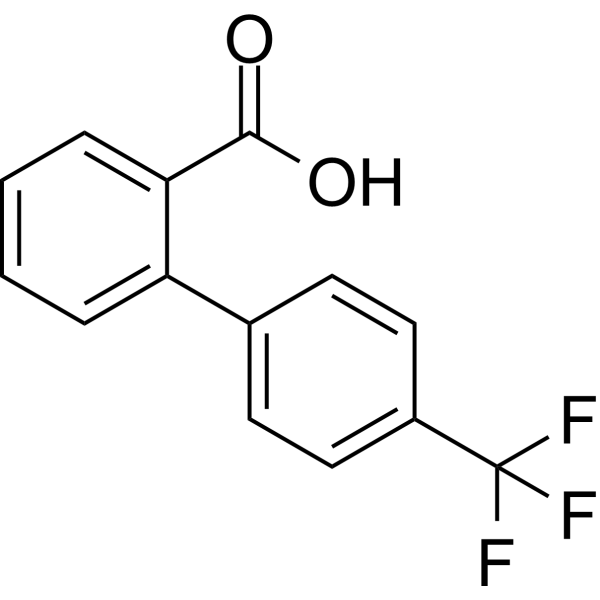
-
- HY-120643
-
|
|
11β-HSD
|
Metabolic Disease
|
|
BMS-823778 hydrochloride is a potent, selective and orally active 11β-HSD1 inhibitor with an IC50 of 2.3 nM against human 11β-HSD1 .
|
-
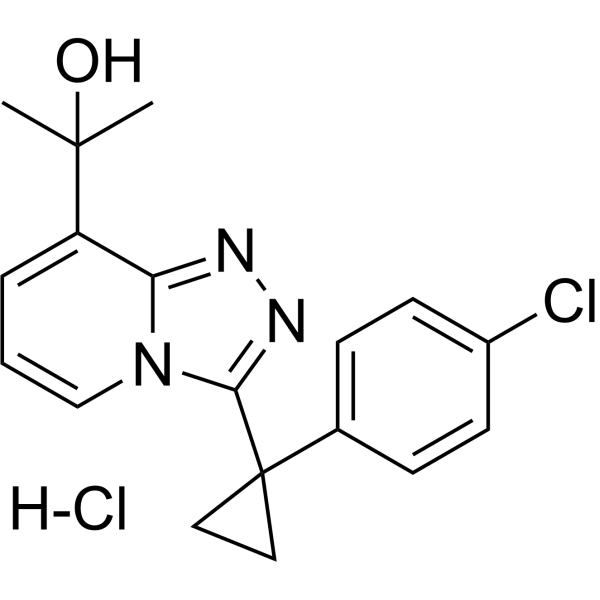
-
- HY-113567
-
|
|
FXR
|
Metabolic Disease
|
|
GSK2324 (Compd 1c) is a FXR agonist for diabetes study, with an EC50 of 120 nM. GSK2324 exhibits t1/2 values of 84 min (mouse), 170 min (rat), 110 min (beagle) and 120 min (cyno), respectively .
|
-

-
- HY-161297
-
-

-
- HY-124314
-
|
|
MAGL
|
Metabolic Disease
|
|
LEI-106 is a potent, dual sn-1-Diacylglycerol lipase α (DAGL-α)/ABHD6 inhibitor with an IC50 of 18 nM for DAGL-α and a Ki of 0.8 μM for ABHD6. LEI-106 inhibits the hydrolysis of [ 14C]-sn-1-oleoyl-2-arachidonoyl-glycerol, the natural substrate of DAGL-α, with a Ki of 0.7 μM .
|
-
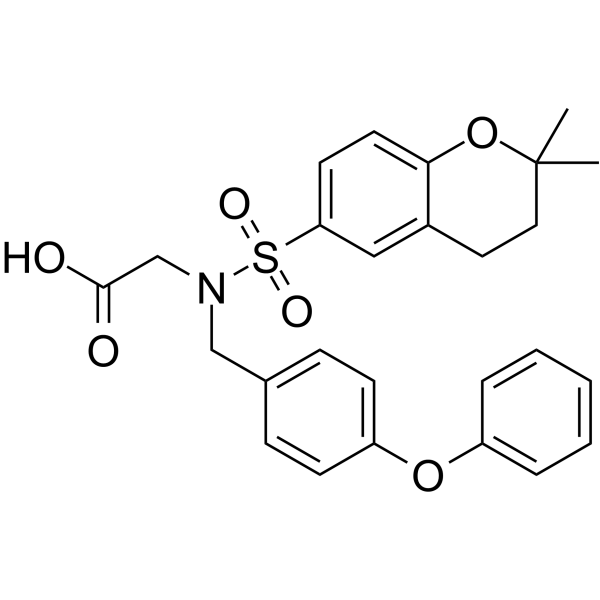
| Cat. No. |
Product Name |
Target |
Research Area |
-
- HY-P4860
-
|
|
Akt
|
Metabolic Disease
|
|
Adropin (34-76) (human, mouse, rat) regulates fuel selection preferences in skeletal muscle. Adropin increases insulin-induced Akt phosphorylation and cell-surface expression of GLUT4, in diet-induced obesity (DIO) mouse.
|
-
- HY-P10032A
-
-
- HY-P10032
-
-
- HY-P1723A
-
|
Neuropeptide Q TFA
|
Neuropeptide Y Receptor
|
|
|
Spexin TFA is a potent galanin receptor 2/3 (GAL2/GAL3) agonist (EC50 values are 45.7 and 112.2 nM, respectively). Spexin TFA exhibits no significant activity at galanin receptor 1. Spexin TFA is an endogenous satiety-inducing peptide; Spexin TFA inhibits long chain fatty acid uptake by adipocytes and decreases food consumption in diet-induced obese mice and rats. Spexin TFA attenuates LH secretion in goldfish. Spexin TFA exhibits anxiolytic effects in vivo.
|
| Cat. No. |
Product Name |
Category |
Target |
Chemical Structure |
| Cat. No. |
Product Name |
Chemical Structure |
-
- HY-101064S2
-
|
|
|
Fmoc-leucine-d3 is the deuterium labeled Fmoc-leucine. Fmoc-leucine is a selective PPARγ modulator. Fmoc-leucine activates PPARγ with a lower potency but a similar maximal efficacy than rosiglitazone. Fmoc-leucine improves insulin sensitivity in normal, diet-induced glucose-intolerant, and in diabetic db/db mice. Fmoc-leucine has a lower adipogenic activity[1].
|
-

-
- HY-101064S3
-
|
|
|
Fmoc-leucine-d10 is the deuterium labeled Fmoc-leucine. Fmoc-leucine is a selective PPARγ modulator. Fmoc-leucine activates PPARγ with a lower potency but a similar maximal efficacy than rosiglitazone. Fmoc-leucine improves insulin sensitivity in normal, diet-induced glucose-intolerant, and in diabetic db/db mice. Fmoc-leucine has a lower adipogenic activity[1].
|
-

-
- HY-14393S
-
|
|
|
Emodin-d4 is the deuterium labeled Emodin. Emodin (Frangula emodin), an anthraquinone derivative, is an anti-SARS-CoV compound. Emodin blocks the SARS coronavirus spike protein and angiotensin-converting enzyme 2 (ACE2) interaction[1]. Emodin inhibits casein kinase-2 (CK2). Anti-inflammatory and anticancer effects[2]. Emodin is a potent selective 11β-HSD1 inhibitor with the IC50 of 186 and 86 nM for human and mouse 11β-HSD1, respectively. Emodin ameliorates metabolic disorder in diet-induced obese mice[3].
|
-

Your information is safe with us. * Required Fields.
Inquiry Information
- Product Name:
- Cat. No.:
- Quantity:
- MCE Japan Authorized Agent:













































